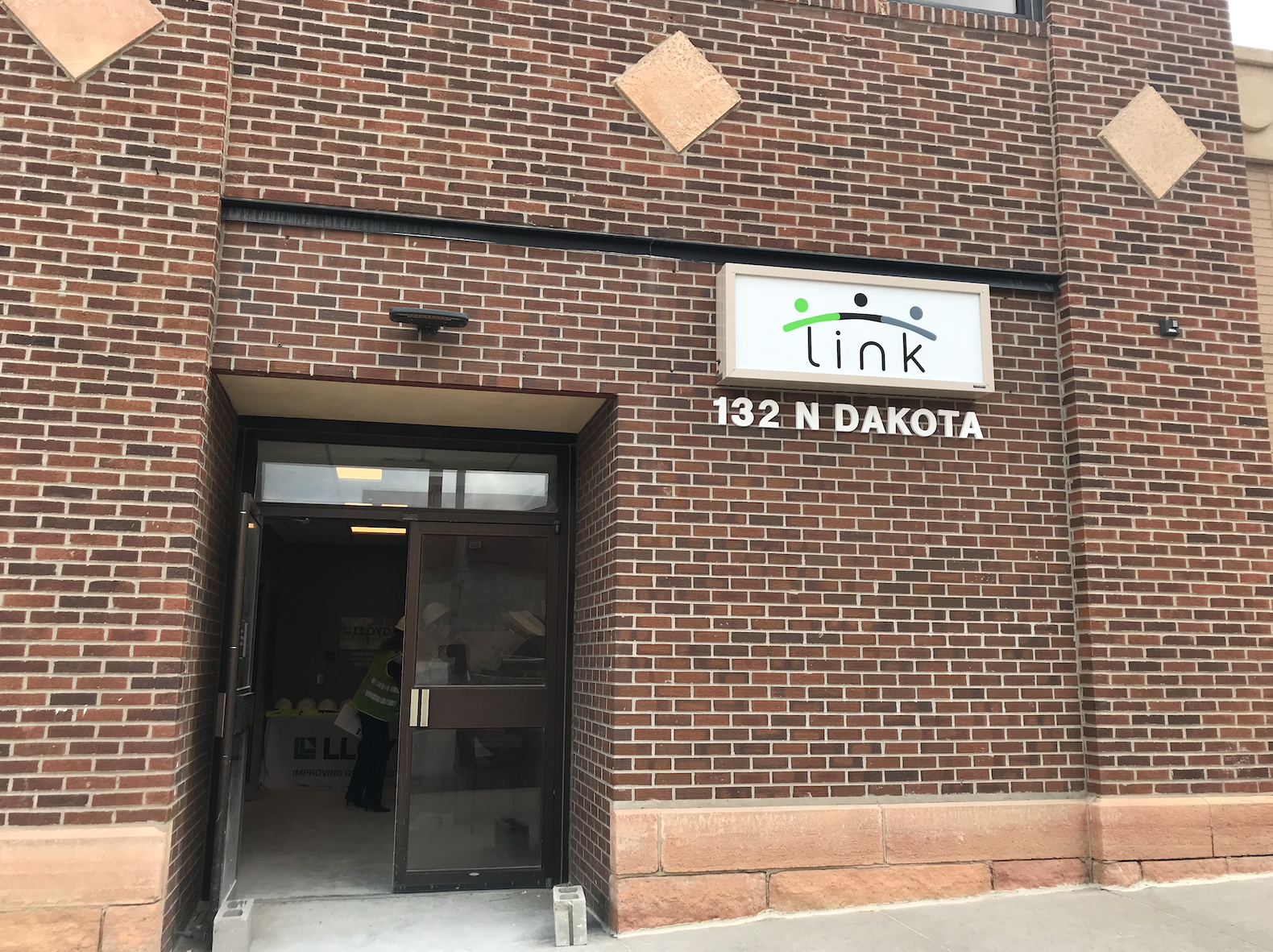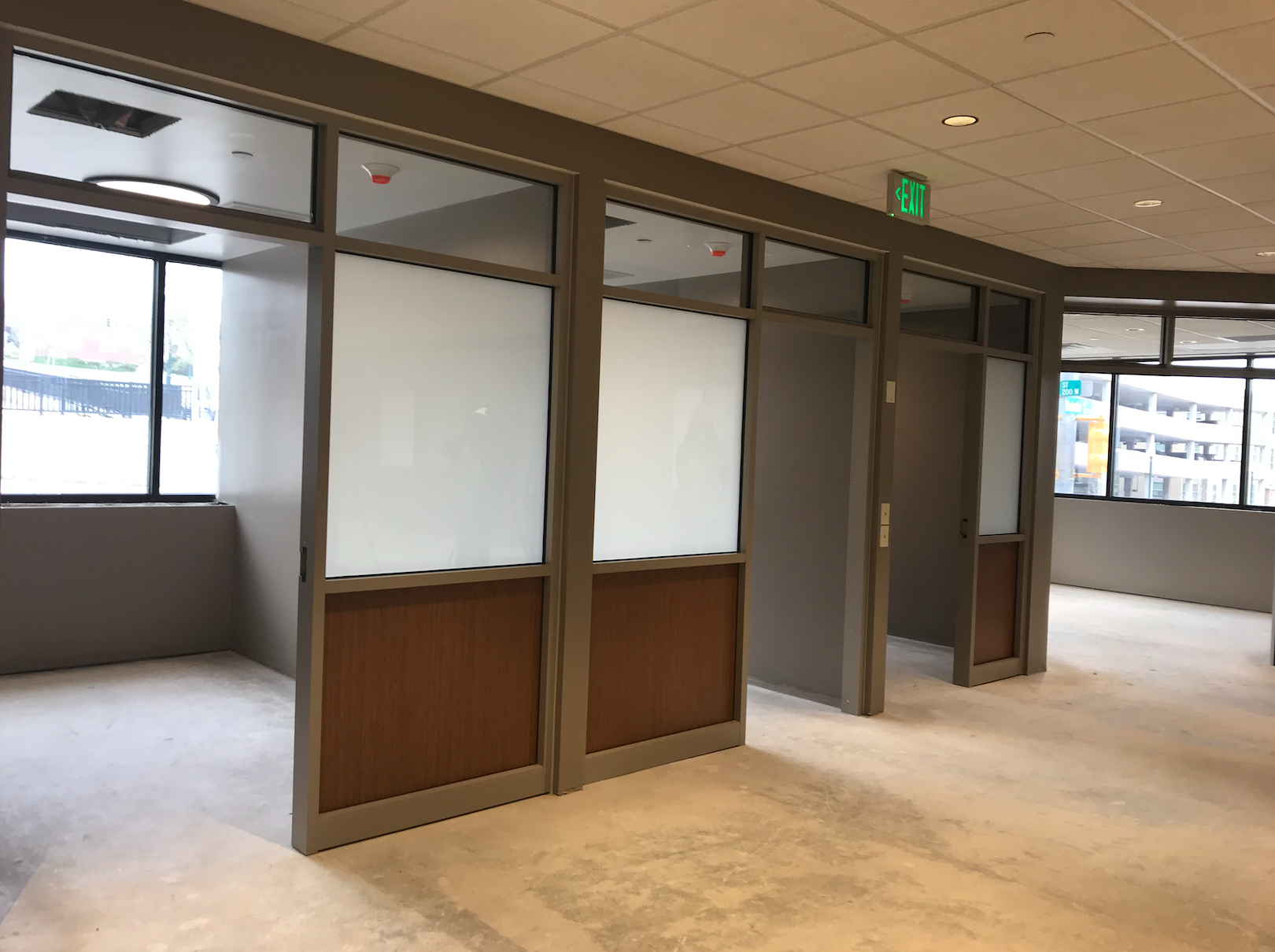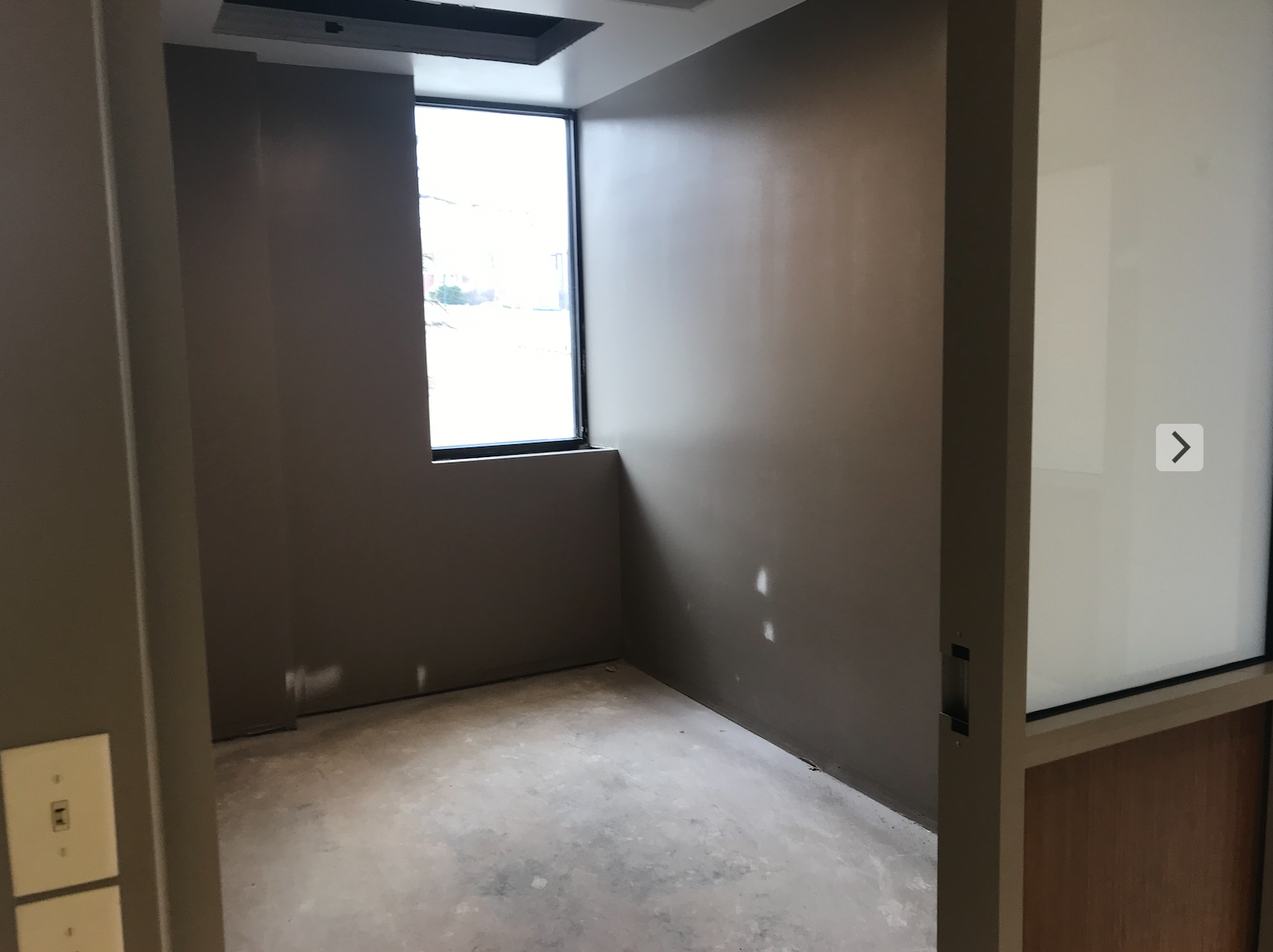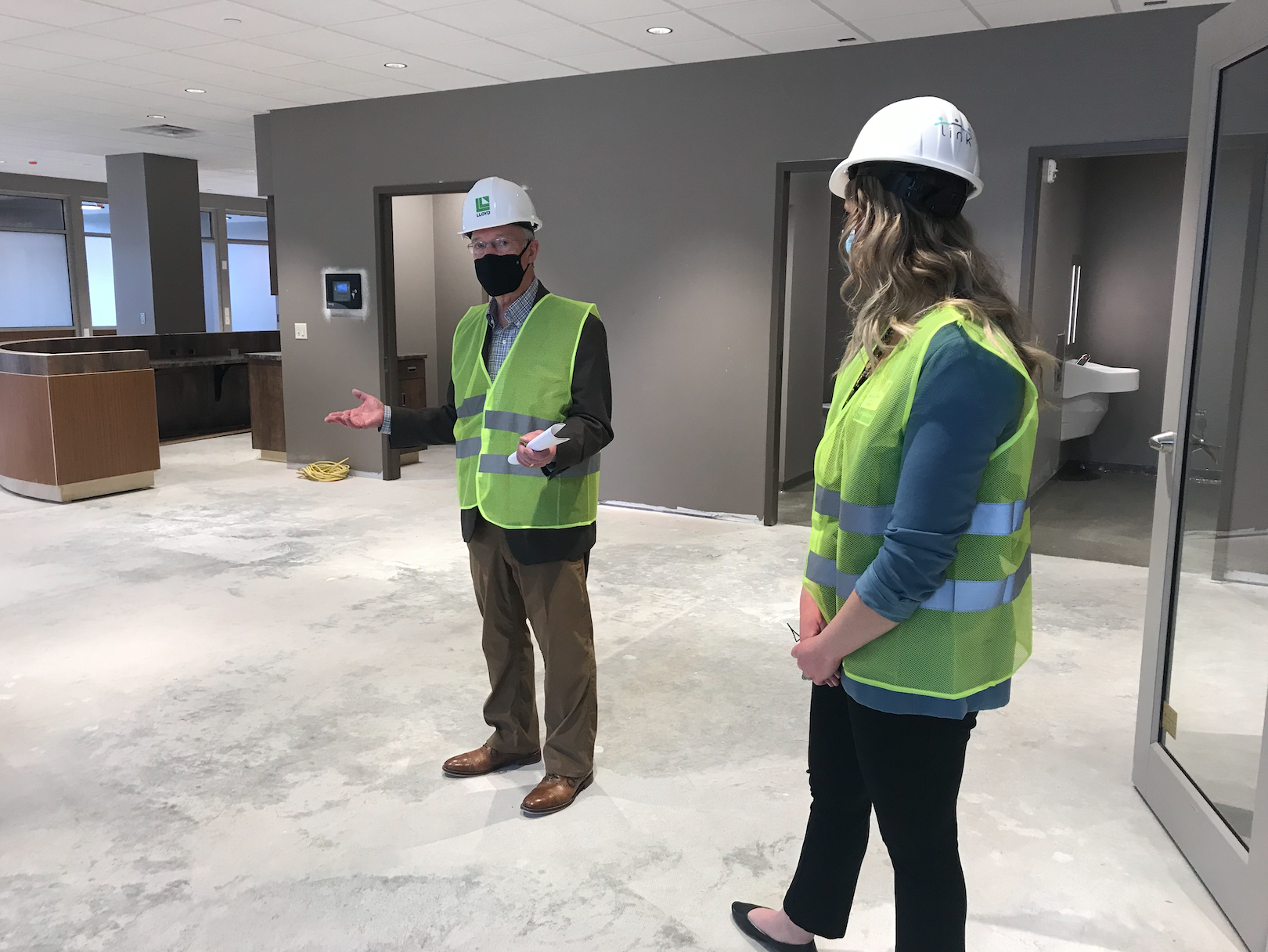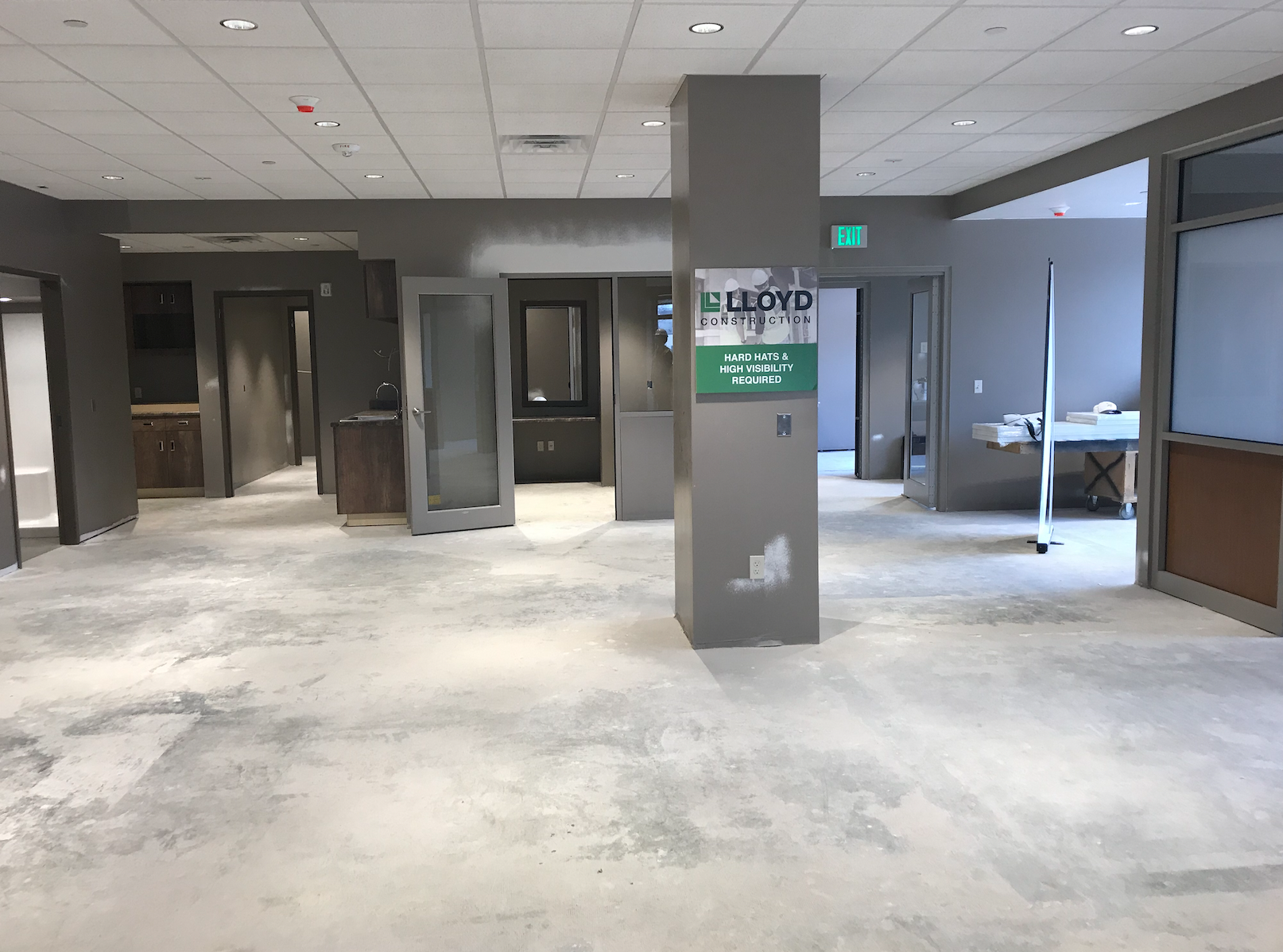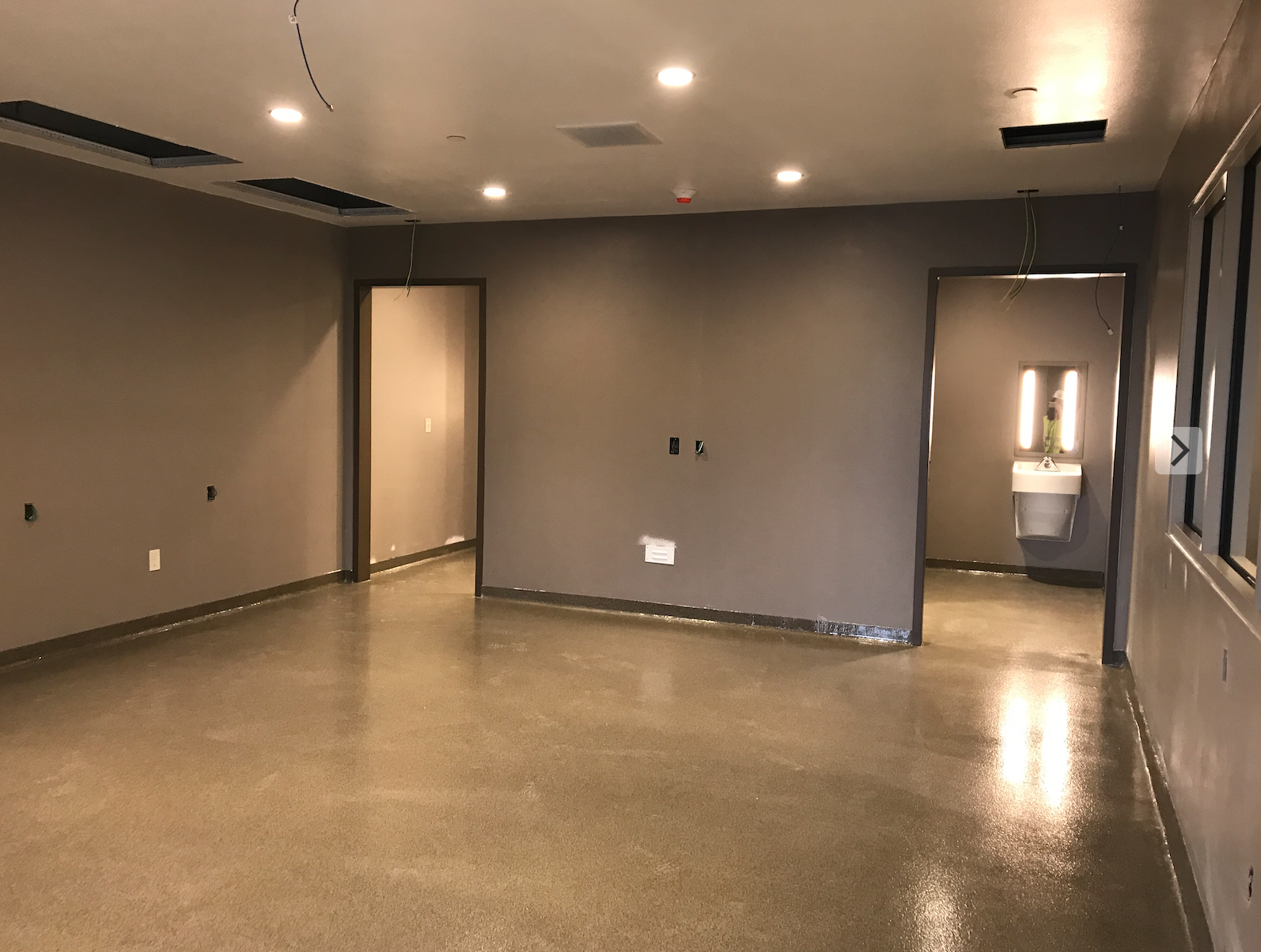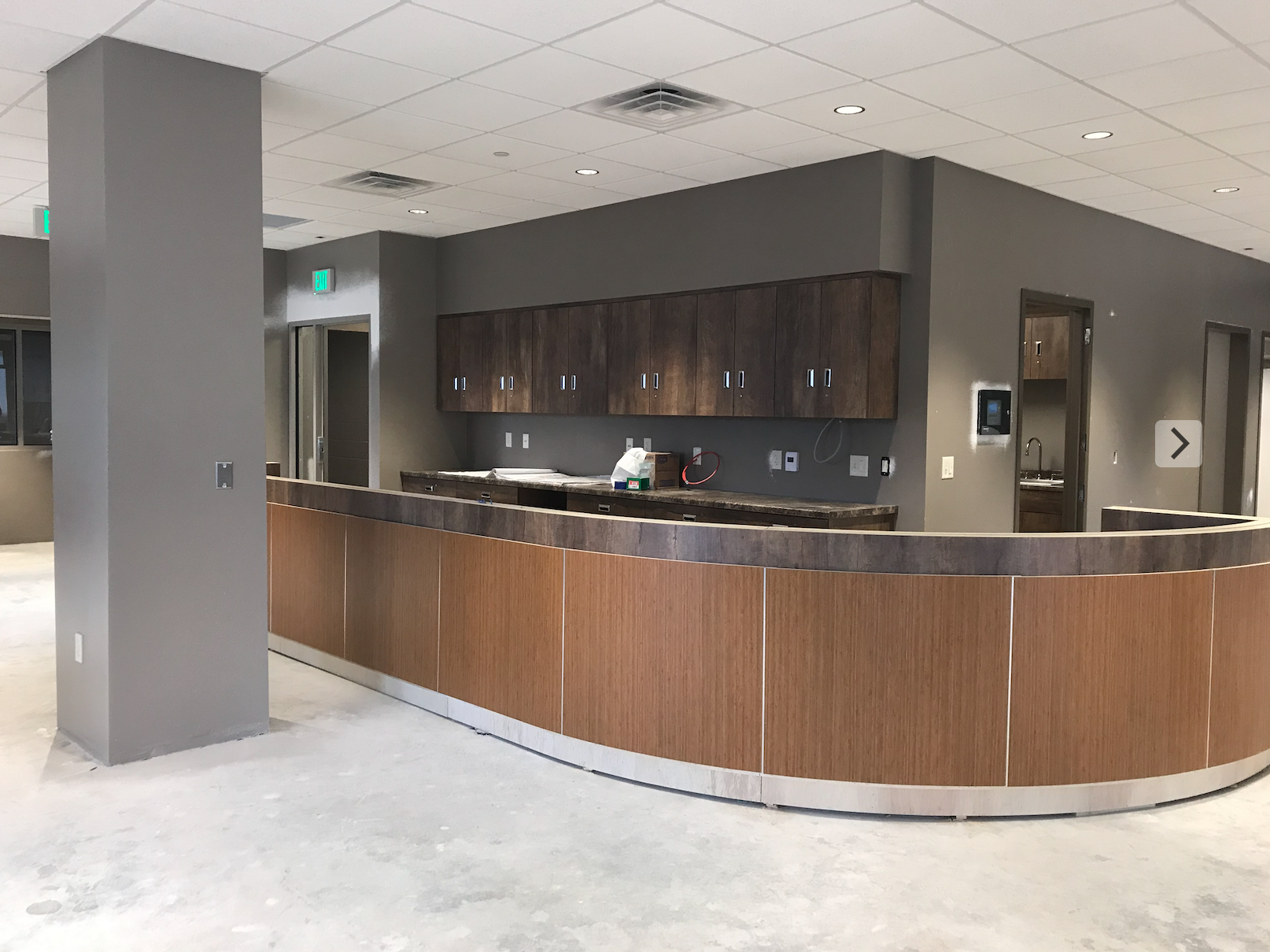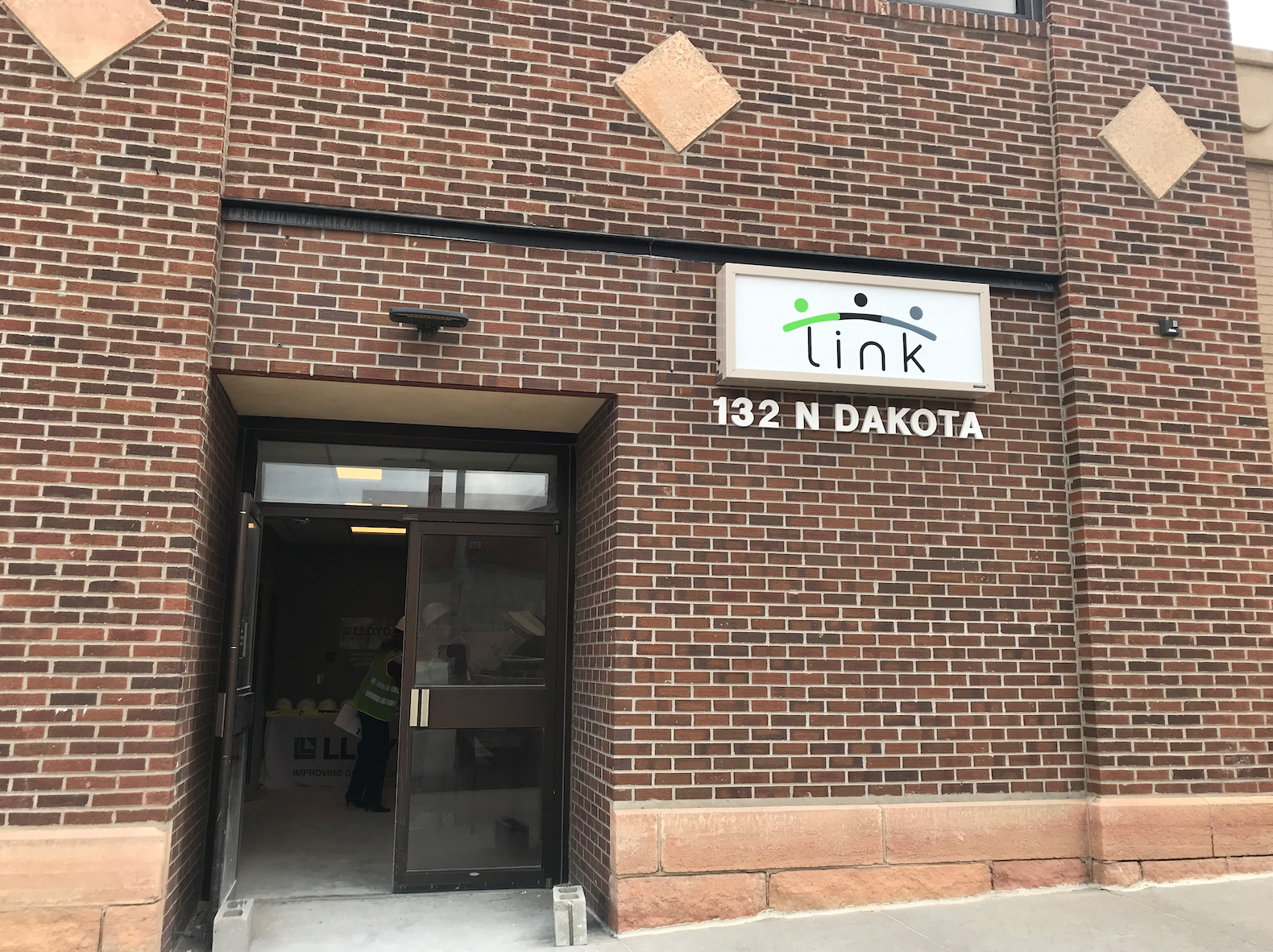Simplified: People in Sioux Falls who need immediate help for mental health emergencies, a place to sober up or a medically monitored detox will soon have a new resource in The Link.
Tell me more
The Link is a planned 24/7 triage center aimed at giving people a starting point to connect with addiction help, mental health resources and more. It's set to open in June, but media got an early look at the new facility late last week.
Why it matters:
- The Link has been years in the making as local governments and hospitals worked to find a way to create a centralized resource for people in need of help.
- It's got room for 23 people, including individual rooms for detox, space for people in a mental health crisis and a group sobering center for people who need a safe place to sober up.
- There will be no charge for people using The Link, though billable expenses will be sent to insurance or Medicaid as applicable, and some expenses will be eligible for reimbursement by the state, Project Director Steve Lindquist said.
- The hope is that the Link will offer an alternative place to go, thus reducing the burden on jails and emergency rooms.
"It's a unique public-private arrangement with benefits for all partners," Lindquist said.
How do you use The Link's services?
The facility is open 24/7, and people who think they or someone they know might benefit from the triage center's services can call ahead and talk to staff. It's expected that most of the traffic to The Link will be from walk ins.
The goal is efficiency, said Madeline Miller, nurse manager for The Link.
"It should take less than 15 minutes ... to evaluate the person to determine if they meet the criteria," Miller said.
What are the criteria to be able to stay at The Link?
A person must:
- be at least 18 years old
- be nonviolent
- not have a mental health hold
- be in a relatively stable physical and mental condition.
Who is overseeing The Link?
All four agencies – the City of Sioux Falls, Minnehaha County, Sanford Health and Avera Health – have oversight, but Avera is the day-to-day provider, meaning staff of The Link will be Avera employees.
Employees will include registered nurses, behavioral health technicians, case manager partners, chemical dependency counselors and security. Miller anticipates full staff will be the equivalent of about 17 full-time people, but more likely will be closer to 25 actual employees.
What needs to happen between now and opening?
Primarily, finishing construction.
There are some floors that still need installing, and all of the furniture has to be moved in.
There are also a few more positions to fill, Miller said, primarily in security.
And, there's some final accreditation details that need sorting, Lindquist said, but everything is on track for an opening as early as June 1.
What will it look like?
Here's an early look at the facility:
